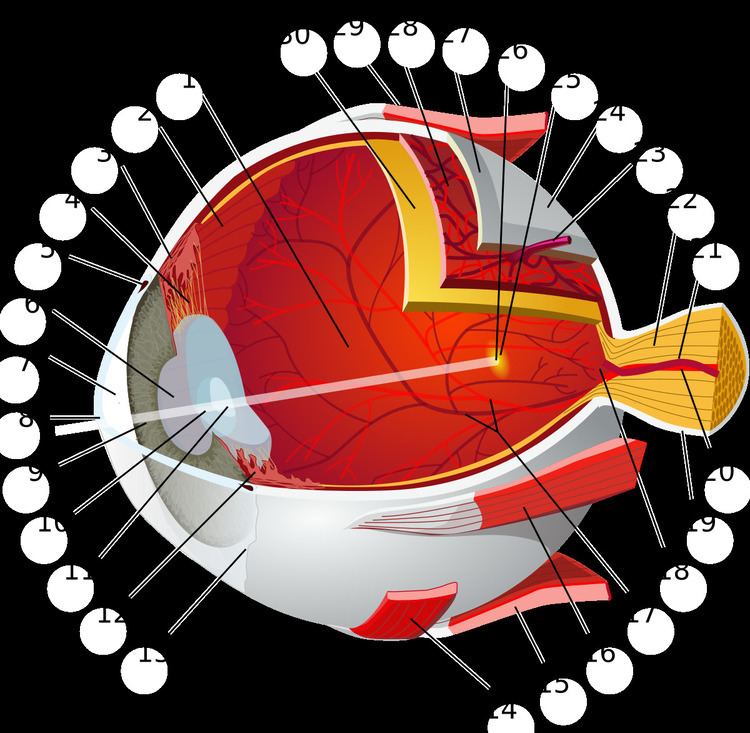Dorlands/Elsevier l_05/12480797 FMA 58686 | TA A15.2.04.014 | |
 | ||
Latin stratum nucleare internum retinae | ||
The inner nuclear layer or layer of inner granules, of the retina, is made up of a number of closely packed cells, of which there are three varieties, viz.: bipolar cells, horizontal cells, and amacrine cells.
Contents
Bipolar cells
The bipolar cells, by far the most numerous, are round or oval in shape, and each is prolonged into an inner and an outer process.
They are divisible into rod bipolars and cone bipolars.
Connection types
Midget bipolars are linked to one cone while diffuse bipolars take groups of receptors. Diffuse bipolars can take signals from up to 50 rods or can be a flat cone form and take signals from seven cones. The bipolar cells corresponds to the intermediary cells between the touch and heat receptors on the skin and the medulla or spinal cord.
Horizontal cells
The horizontal cells lie in the outer part of the inner nuclear layer and possess somewhat flattened cell bodies.
Their dendrites divide into numerous branches in the outer plexiform layer, while their axons run horizontally for some distance and finally ramify in the same layer.
Amacrine cells
The amacrine cells are placed in the inner part of the inner nuclear layer, and are so named because they have not yet been shown to possess axis-cylinder processes.
Their dendrites undergo extensive ramification in the inner plexiform layer.
